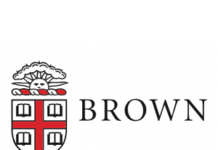 A new study from researchers from Harvard University, Stanford University, and the University of Munich has found that the achievement gap between disadvantaged students and well-off students is as wide today as it was for children born in 1954 when it comes to tests in math, reading, and science. However, contradictory to previous research, this new study suggests that socioeconomic achievement gaps have not widened substantially in recent years, but rather remained the same.
A new study from researchers from Harvard University, Stanford University, and the University of Munich has found that the achievement gap between disadvantaged students and well-off students is as wide today as it was for children born in 1954 when it comes to tests in math, reading, and science. However, contradictory to previous research, this new study suggests that socioeconomic achievement gaps have not widened substantially in recent years, but rather remained the same.
“After looking at a comprehensive, systematic set of student assessments, we are unable to confirm earlier, more limited research that purports to show income-achievement differences have grown dramatically,” said Paul E. Peterson, a professor of government at Harvard, director of the university’s program on Education Policy and Governance, and a senior fellow at the Hoover Institution.
The authors used a representative sample of student performance on four national assessments administered to students born between 1954 to 2001. The sample included a total of 98 tests administered over 47 years to more than 2.7 million students around the ages of 14 to 17.
The results found that extremely disadvantaged students are on average three to four years of learning behind their more affluent peers. This achievement gap has remained roughly the same over the past half-century. The researchers also found that gaps between other subgroups, such as race, remained nearly constant. While the Black-White achievement gap did narrow in the early decades of the period under study, it has remained stagnant for the past 25 years. Additionally, the data showed that while overall performance among 14 year olds have improved steadily over the half-century, gains among 17-year-olds amounted to only 2 percent per decade, and none at all for the last quarter-century.
“On the positive side, the country has launched multiple compensatory education programs, including Head Start, school desegregation, federal aid to districts with low-income students, special-education programs, and court-ordered reductions in fiscal inequalities across school districts,” said Eric A. Hanushek, the Paul and Jean Hanna Senior Fellow at the Hoover Institution of Stanford University. “On the negative side, we appear to be have seen a decline in teacher quality that has had particularly dire consequences for low-income students.”
The full report, “The Achievement Gap Fails to Close,” was published in the journal Education Next. It may be accessed here.










